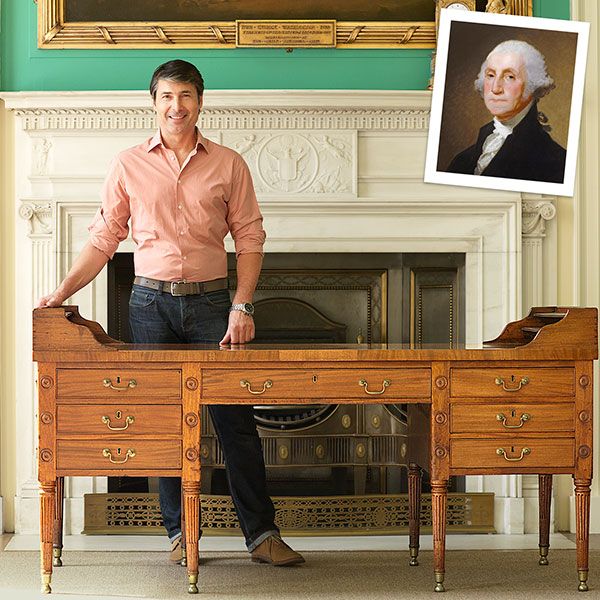
Putting the luster back into an heirloom piece that has seen better days is no small task. Nobody knows that better than furniture restoration expert Christophe Pourny, right, author of The Furniture Bible and the man entrusted with refurbishing George Washington’s Sheraton-style mahogany desk. Here, Pourny lets us in on a few trade secrets.
Do your research
Learning a piece’s history can clue you in on details—such as the finish, the materials, and how it was assembled—so that you know the scope of the job you’re in for. For example, post-World War II pieces likely have clear coats, such as polyurethanes and lacquers, and thus need to be stripped, whereas prewar finishes, commonly waxes and oils, are far easier to repair.
Assemble your tool kit
For work on delicate pieces, skip the hammer, Pourny advises, but include a rubber mallet to piece things together without damaging the wood. Opt for green painter’s tape over blue when masking off repairs—it’s gentler on finishes—and clamps with plastic pads instead of metal. Forgo modern-day chemicals, such as degreasers, which are often too harsh on old wood. His rare exception: heavy-duty gel stripper for removing tough finishes; it does a better job than eco-friendlier strippers that contain lye, which can burn the wood, or citrus oils, which are less effective.
Don’t be afraid to make changes
Many people worry about devaluing antiques by replacing old parts, but Pourny recommends a middle ground. A piece is devalued if it’s not stable, functioning properly, or looks neglected. Pros advise replacing no more than 30 percent of a piece (any more, and it’s no longer an antique). Pourny suggests swapping old hardware for quality reproductions when originals are missing or damaged; in the end, you’ll give the piece decades more life.